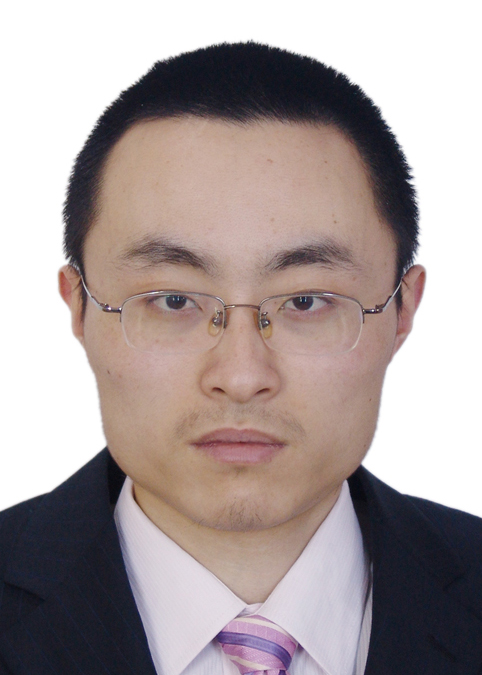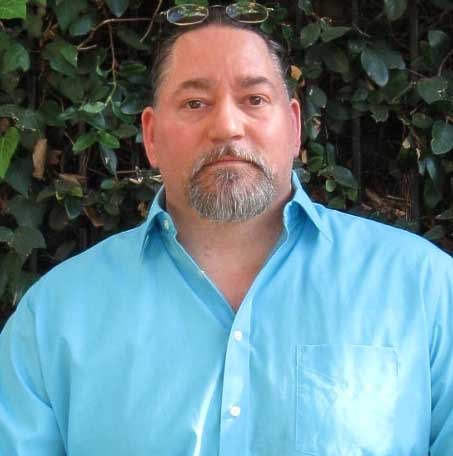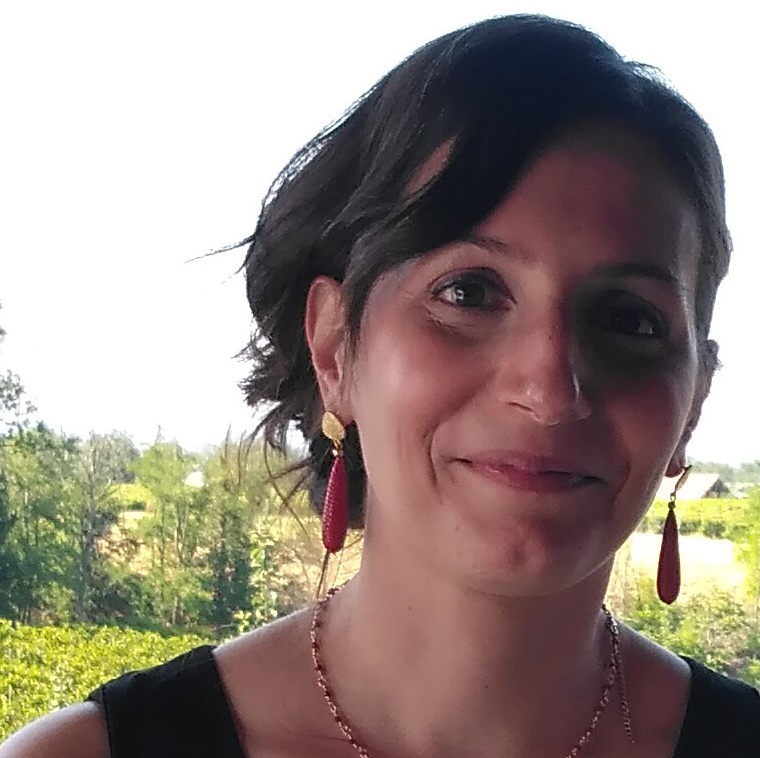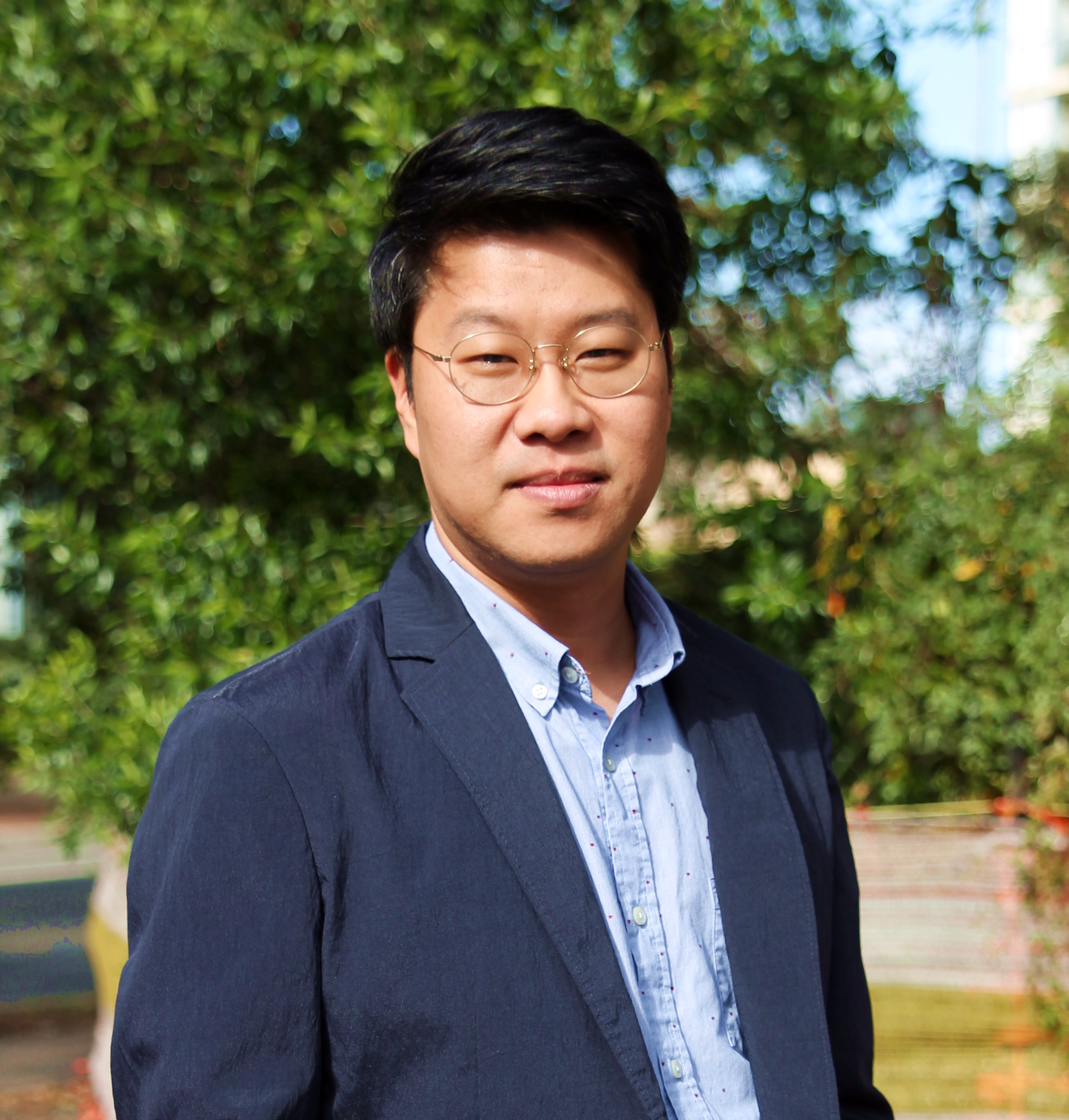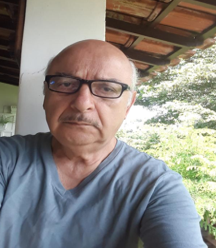Invited Speakers
Dr. Yu-Dong Zhang
ProfessorDepartment of Informatics, University of Leicester, UK
Speech Title: Recent progresses of Chest CT based COVID-19 Detection
Abstract: Deep learning is a rapidly advancing field in recent years, in terms of both methodological development and practical applications. It allows computational models of multiple processing layers to learn and represent data with multiple levels of abstraction. It is able to implicitly capture intricate structures of large-scale data and ideally suited to some of the hardware architectures that are currently available. COVID-19 is a pandemic disease, which already caused more than 1 million deaths till now. This invited speak presents the recent progresses of using transfer learning and graph convolutional network technologies in COVID-19 detection.
Keywords: COVID-19; transfer learning; graph convolutional network
Dr. Eric J. Sorin
Associate ProfessorDepartment of Chemistry & Biochemistry, California State University, Long Beach, USA
Speech Title: Overcoming the Heuristic Nature of k‑Means Clustering: Identification and Characterization of Binding Modes from Simulations of Molecular Recognition Complexes
Abstract: Abstract: The accurate and reproducible detection and description of thermodynamic states in computational data is a nontrivial problem, particularly when the number of states is unknown a priori and for large, flexible chemical systems and complexes. To this end, we report a novel clustering protocol that combines high-resolution structural representation, brute-force repeat clustering, and optimization of clustering statistics to reproducibly identify the number of clusters present in a data set (k) for simulated ensembles of butyrylcholinesterase in complex with two previously studied organophosphate inhibitors. Each structure within our simulated ensembles was depicted as a high-dimensionality vector with components defined by specific protein−inhibitor contacts at the chemical group level and the magnitudes of these components defined by their respective extents of pair-wise atomic contact, thus allowing for algorithmic differentiation between varying degrees of interaction. These surface-weighted interaction fingerprints were tabulated for each of over 1 million structures from more than 100 μs of all-atom molecular dynamics simulation per complex and used as the input for repetitive k-means clustering. Minimization of cluster population variance and range afforded accurate and reproducible identification of k, thereby allowing for the characterization of discrete binding modes from molecular simulation data in the form of contact tables that concisely encapsulate the observed intermolecular contact motifs. While the protocol presented herein to determine k and achieve non-heuristic clustering is demonstrated on data from massive atomistic simulation, our approach is generalizable to other data types and clustering algorithms, and is tractable with limited computational resources.
Keywords: molecular dynamics, enzyme inhibition, interaction fingerprint, contact motif, contact table
Dr. William Cho
Scientific OfficerDepartment of Clinical Oncology, Queen Elizabeth Hospital, Hong Kong, China
Speech Title: Molecular diagnostic and therapeutic potentials for the recurrence of non-small cell lung cancer
Abstract: About 80-85% of lung cancers are non-small cell lung cancer (NSCLC), which is the leading cause of cancer-related death in the world. Surgery is the potentially curative treatment for early-stage NSCLC patients. However, 30-55% of patients with NSCLC develop recurrence despite curative resection. Thus, the identification of genetic alterations related to recurrence in NSCLC patients may help better stratify high-risk individuals and guide treatment strategies. Targeted therapy is another treatment modality for NSCLC. Nevertheless, drug resistance is a major cause for therapeutic failure in NSCLC leading to tumor recurrence and disease progression, the personalized prediction of therapeutic resistance, recurrence or metastatic disease progression still remains an unsolved problem. Our previous studies attempted to identify the molecular biomarkers of recurrence and drug resistance in NSCLC. Besides, we also tried to find the biomarkers and therapeutic targets that play critical roles in the tumorigenesis of NSCLC. In this presentation, I would like to share my studies on the identification of genetic alterations in recurrence and the plausible mechanism(s) involving in resistance and recurrence, finally end up with some studies on the treatment of NSCLC.
Dr. Di Wang
ProfessorSchool of life sciences, Jilin University, China
Speech Title: Screening on the Efficacy of Mushroom in Changbai Mountain Area and their Industrialization
Abstract: According to the statistical data, there are 1789 edible and 798 medicinal fungi in China. In Changbai Mountain area of Jilin province in China, there are still unrevealed mushrooms. We focused our research on the pharmacological functions of edible and/or medicinal mushrooms and their effective constituents. Till now, we successfully developed over 30 types of mouse and/or rat models for evaluation the effects of agents on 13 kinds of diseases, such as depression, diabetes, osteoporosis, alcohol-induced liver injury, Alzheimer’s Disease, colitis and colon cancer, and et al. Based on these animal models and related cell models, we have detected the functions of over 19 types of mushrooms, and their constituents including polysaccharides, triterpene, alkaloid and flavone. By combining the proteomics, metabonomics, western blot, and ELISA, we further investigated the mechanisms of the revealed functions, most of which were focused on the modulation of oxidative stress system. Encouragingly, based on our research results, four functional food contained different mushrooms with the effects on renal protection, anti-diabetes and anti-fatigue have got into declaring stage in China.
Key Words: Mushrooms, Function Screening, Product Development
Dr. Sandrine Gerber
ProfessorGroup for Functionalized Biomaterials, Ecole Polytechnique Fédérale de Lausanne, Institute of Chemical Sciences and Engineering, Lausanne, Switzerland
Speech Title: Dual ionic-covalent alginate based hydrogels presenting drug eluting properties for cell transplantation applications
Abstract: Following the pioneering work of Bisceglie on the immobilization of insulin producing cells1 and the concept of "artificial cells" introduced in 1964 by Chang,2 the immuno-isolation of endocrine cells into three-dimensional semi-permeable hydrogels has emerged as a promising strategy for cell-based therapies.3 Among the many polymers which have been evaluated for cell microencapsulation, the natural polysaccharide sodium alginate (Na-alg) emerged as the reference material for cell immobilization due to its fast gelation in the presence of divalent cations and its high cell compatibility and in vivo tolerance.4-6 Despite these promising properties, the transfer to clinical applications is hampered by the lack of durability of alg hydrogels in vivo,7,8 the shorage of human cell material suitable for transplantation and the frequently observed pericapsular fibrotic overgrowth following the transplantation of alginate-based microencapsulated cells.9 We herein present several strategies aiming at maintaining the favorable properties of alg hydrogels while improving their stability in vivo by covalent conjugation of the hydroxyl groups of the alg backbone to cross-reactive poly(ethylene glycol) derivatives providing reinforcement of the hydrogel ionic network by covalent crosslinking interactions.10,11 Our recent approach for the controlled delivery of anti-inflammatory agents from the encapsulation matrix will be presented in the context of the transplantation of insulin producing cells, resulting in the mitigation of adverse fibrotic response.12 The development of porcine cell batches as alternative cells source for transplantation will also be discussed.
Keywords: alginate, cross-linked hydrogel, drug eluting hydrogel, cell microencapsulation, fibrotic overgrowth, cell transplantation.
Acknowledgements: The authors acknowledge the financial support from the Swiss National Science Foundation (Grant N° 310030E-164250) and the Foundation Insuleman.
Dr. Wenjie Cai
ProfessorCollege of Information Science and Technology, Donghua University, China
Speech Title: Premature beats identification using deep learning
Abstract: Premature beats including premature ventricular contraction (PVC), premature atrial contraction and premature junctional contraction. The latter two are called supraventricular premature beats (SPB). Occasional premature beats may happen in healthy people, whereas frequent ones indicate heart diseases. The China Physiological Singal Challenge (CPSC) 2020 aims to identify the premature beats in long time recorded dynamic single-lead ECGs. To solve this challege, we proposed a deep learning architecture containing multi-dilated convolutional blocks and Squeeze-and-Excitation networks. Firstly, the data were preprocessed to correct baseline wandering and remove high-frequency noise. Secondly, the data were fed into the deep learning neural networks to extract features related to premature beats. Finally, the extracted features were further processed by a decision algorithm to get the classifications of the ECG beats and the locations of the premature beats. The proposed model was trained with CPSC 2020 dataset which contained ten long records and evaluated with the hidden dataset. The first stage results of the challenge showed that the PVC score reached 60640 and the SPB score reached 51710. In conclusion, our algorithm showed acceptable performance in dectecting premature beats and is promising in real-time applications.
Keywords: deep learning; premature beat; CPSC
Dr. Maja Rosič
Specialist of Gynecology and Obstetrics, General Hospital Ptuj, SloveniaSpeech Title: Use of hysterosalpingo-foam sonography for assessment of the efficacy of Essure hysteroscopic sterilization
Abstract: After Essure (Bayer AG, Leverkusen, Germany) hysteroscopic sterilization procedure, a confirmation test is performed to evaluate the micro-insert position or tubal occlusion and assess the success of sterilization. The reference standard for confirmation of tubal occlusion is hysterosalpingography (HSG). 2-dimensional (2D) transvaginal ultrasonography was proposed to be an adequate noninvasive method for assessment of micro-insert position. However, when sterilization is complicated or when the confirmation with 2D transvaginal ultrasonography is unsatisfactory, HSG for evaluation of tubal occlusion is still indicated. Recently, hysterosalpingo-foam sonography (HyFoSy) was introduced and was suggested to be a possible less invasive alternative to HSG during infertility workup. Our prospective study included patients, who underwent Essure hysteroscopic sterilization, followed by 2D transvaginal ultrasonography, HyFoSy and HSG 12 weeks after sterilization. 2D transvaginal ultrasonography was performed to assess the microinsert position. It was followed by HyFoSy and HSG for evaluation of tubal occlusion. The purpose of our study was to evaluate the accuracy HyFoSy compared to HSG for assessment of the efficacy of Essure hysteroscopic sterilization.
Keywords: hysteroscopic sterilization, 2D transvaginal ultrasonography, hysterosalpingo-foam sonography, hysterosalpingography
Acknowledgements: We would like to thank the University Medical Center Maribor for help and support.
Dr. Josef Jampílek
ProfessorDepartment of Analytical Chemistry, Faculty of Natural Sciences, Comenius University in Bratislava, Slovakia;
Regional Centre of Advanced Technologies and Materials, Faculty of Science, Palacky University Olomouc, Czech Republic
Speech Title: Multi-target compounds based on cinnamic acid scaffold
Abstract: Multi-target drug discovery represents an innovative approach of medicinal chemistry to overcoming a crisis in drug design, especially of anti-invasive drugs, reflected in the small number of newly approved drugs. This approach is based on the concepts of privileged scaffolds, polypharmacology and multifactorial diseases. Thus it seems to be a very useful tool in the design of antineoplastic and anti-infectious agents, as therapeutic agents designed in this way interact with multiple targets and thus prevent resistance, acting against various classes of pathogens and simultaneously against tumor cells. Similarly, multi-target drugs can be designed for the simultaneous treatment of autoimmune, inflammatory and invasive diseases. This contribution is focused especially on the investigation of new ring-substituted cinnamic acid-based compounds with estimated antimicrobial and anti-inflammatory activity. Structure-activity relationships and the supposed mechanism of action are discussed.
Keywords: multi-target compounds, privileged scaffolds, cinnamic acid
Acknowledgements: This study was supported by the Slovak Research and Development Agency (Grant No. APVV-17-0373).
Dr. Selim Bozkurt
Institute of Cardiovascular Science, University College London, UKSpeech Title: Computational Modelling of Patient-Specific Craniosynostosis Correction
Abstract: Craniosynostosis is a condition in which fibrous sutures in an infant skull fuses prematurely and turns into bone. Unicoronal craniosynostosis (UC) and Lambdoid Craniosynostosis (LC) are two different types craniosynostosis affecting the forehead and back of the head. UC is the second most common type of nonsyndromic craniosynostosis and characterised by ipsilateral forehead and fronto-parietal region flattening with contralateral compensatory bossing. It is a complex condition; therefore, difficult to treat because of the asymmetry in the orbits and cranium. LC is a rare non-syndromic craniosynostosis characterised by fusion of the lambdoid sutures at the back of the head. Surgical correction including the spring assisted cranioplasty is the only option to correct the asymmetry at the skull in LC. However, the aesthetic outcome from spring assisted cranioplasty may remain suboptimal. Computational simulations allow testing of the effect of different osteotomies, spring locations and required forces, therefore, parametric finite element (FE) models could allow optimisation of function and aesthetic outcomes in surgical craniosynostosis corrections. The aim of this study is to develop patient-specific parametric FE models for the patients affected by UC and LC, which simulate spring assisted skull correction and biological mechanisms such as skull growth. The skull geometries from UC and LC patients who underwent surgical correction were reconstructed from the pre-operative computed tomography (CT) images in Simpleware ScanIP. Skull growth and surgical intervention were simulated using MSC Marc FE software. The simulation results show a good agreement with post-operative CT scans and provide insights about the potential treatment techniques which can be used to correct craniosynostosis in future.
Keywords: craniosynostosis, spring assisted cranioplasty, unicoronal craniosynostosis, lambdoid craniosynostosis, finite element analyses
Dr. Ahmad Esmaili Torshabi
Department of Sciences and Modern Technologies, Graduate University of Advanced Technology, IranSpeech Title: Correlation between produced positron emitters and proton dose distribution at proton therapy
Abstract: A successful proton therapy strongly depends on accurate comprehension of 3D dose distribution and range verification of therapeutic beam while protons penetrate inside patient body to reach tumor volume, according to Bragg peak. One of the proposed strategy to estimate the Bragg peak position is using online monitoring system by means of Positron Emission Tomography (PET). PET monitoring strategy is based on the detection of 0.511 MeV photons, resulting from the annihilation phenomena of positrons emitted by radioactive positron emitters, such as C-11, O-15. Theses latter isotopes are generated by colliding incident protons with nuclei of tissues via non-elastic nuclear reaction. Produced positrons move through the matter and deposit their energy via coulomb scattering and then annihilation is happened at rest. The produced positron emitters are the base of imaging process from protons tracing and Bragg curve information extraction. It should be noted that, the spatial relation between dose distribution of protons and produced positron emitters is complex. The main aim of this contribution is to investigate nuclear interactions and to find any possible correlation among proton dose distribution and produced isotopes and coordinate of annihilation phenomena by means of Monte Carlo FLUKA simulation code. Final analysed results represent that there an agreement between the location of protons Bragg peak and the position of produced positron emitters. Moreover, the coordinate of annihilation phenomena and the position of Bragg peak are related with each other.
Keywords: Proton therapy, dose distribution, Positron, radoactive positron emitter, annihilation phenomena
Dr. Rebecca Re
Department of Physics, Politecnico di Milano, Milano, ItalySpeech Title: Clinical applications of TD-NIRS: from Neuroscience to muscle rehabilitation
Abstract: Time Domain (TD) Near infrared spectroscopy (NIRS) is a spectroscopic optical technique which makes use of light in the 600-1100 nm window to assess the optical tissue properties, i.e. absorption and scattering coefficient. This technique is fast and non-invasive, therefore it can be widely used in real-time, in-vivo applications on humans allowing to determine the absolute values of the hemodynamic tissue’s parameters and to follow their variation in time. Applications to brain (ischemic stroke patients, glaucoma patients) and muscle (rehabilitation evaluation together with electromyography) on healthy and pathological subjects will be presented. Example of other clinical applications can include breast (SOLUS project) and thyroid (LUCA project) monitoring. From an instrumental point of view, recently we are witnessing a drastic decrease in size and costs, which will make TD-NIRS portable and wearable allowing new applications in the field of athletes’ performances assessment or personalized patient monitoring at home.
Keywords: NIRS, fNIRS, diffusion theory, hemodynamics, brain , oxidative metabolism, muscle
Dr. Dong-Hoon Lee
Department of Radiation Convergence Engineering, College of Health Sciences, Yonsei University, Republic of KoreaSpeech Title: Signal Alterations of Glutamate-weighted Chemical Exchange Saturation Transfer in the Demyelination and Remyelination
Abstract: Evaluation and study of demyelination and remyelination may be a major factor in determining the outcome of myelin degeneration with substantial axonal and neuronal cell loss in diseases such as multiple sclerosis. It has become increasingly apparent in recent years that in vivo pathophysiological changes in glutamate occur during demyelination and remyelination in the brain’s white matter. Therefore, observation and evaluation of changes in glutamate levels, a potential essential biomarker, are important to estimate brain metabolism during myelination. Glutamate-weighted chemical exchange saturation transfer (GluCEST) has been introduced as a useful imaging tool that could be used to detect changes in glutamate levels in vivo. In this study, we investigated in vivo changes in glutamate level in the cerebral white matter using GluCEST imaging on a 7 Tesla magnetic resonance imaging (MRI) system, on the premise that changes in glutamate may serve as a significant bio-imaging marker in the processes of demyelination and remyelination.
Keywords: Glutamate, chemical exchange saturation transfer, demyelination, remyelination, cuprizone
Dr. Carlos E Salas
Professor, Institute of Biological Sciences, Federal University of Minas Gerais, BrazilSpeech Title: Application of plant proteolytic cysteinases: their anti-inflammatory activity is relevant to healing improvement?
Abstract: Two plant proteolytic enzymes: bromelain (A comosus) and papain (C. papaya), are well studied and there is abundant literature describing their applications. Both, papain and bromelain are composed by several isoforms. The lactiferous species Vasconcellea cundinamarcensis (ex Carica candamarcensis), native to Latin America, source of edible fruit, belongs to the Caricaceae family. Like papain and bromelain, holds a set of isomorphous proteolytic enzymes in its latex; its role has been associated to plant protection against predation. We theorize that plant latex plays a role akin to blood in mammalian circulatory system during clot formation. Some of the isoforms in V. cundinamarcensis display mitogenic activity in mammalian cells, setting the basis to study their potential as healing agents. The results confirmed the healing effect in various animal ulcer models including humans and a mechanism has been proposed to explain the healing stimulus. More recent studies show that these latex proteinases are immunomodulatory, anti-inflammatory, dissolve thrombus and display antitumor/antimetastasic activity. In clinical trials using the V. curdinamarcensis fraction to heal diabetic-foot chronic wounds, it was found 2.95-fold increase in wound rate compared to hydrogel-Coloplast control. In topical assays, a 10% formulation containing the proteolytic fraction shows a transitory sign of inflammation that recedes within 24 h. The i.v. or s.c. toxicity assays demonstrate that P1G10 at ≤ 20 mg/Kg is non-lethal after single injection, while parental administration (p.o.) >300 mg/kg cause death. In sum these data suggest the potential of this fraction to treat chronic wounds.

